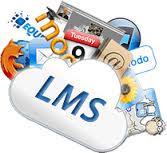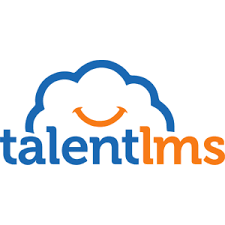What is a Learning Management System?
For those who might not be familiar with online learning, a learning management system (LMS) is an application platform that delivers, manages and tracks results and generates reports for online courses and training programs. The platform can be either hosted on local company servers or hosted remotely in the cloud.
Today, the number of Learning Management Systems to choose from is overwhelming. Gone are the days (thankfully) of the buggy, in-house LMS and the astronomically expensive corporate systems. The good–and sometimes overwhelming–news is that anything you need exists and has been perfected. But with all that choice, research is required!
Why do I need an LMS?
An LMS provides all the functionality necessary for educational institutions, businesses and organizations to offer online, self-paced training. All a learner needs is an Internet (or Intranet) connection to take courses. An LMS allows tracking and analysis on how learners are using and navigating through courses. Tracking course and assessment results helps ensure that an organization meets its training goals and compliance requirements. Tracking allows you to view which courses are abandoned, revisited, and retaken.
The features that most Learning Management Systems have built into them are:
- Student profile pages
- Grade books
- Progress tracking tools
- Grading forums
- Blogs and wikis
- Integrated email communication
- Quizzes
- Surveys
- Groups
- Conferencing technology (text, video, audio)
- Screen-sharing platforms
- White-boarding platforms
- Educational gamification features
- Class calendars
- Community activity streams and much more
Of course the list can go on. However, it’s important not to get overwhelmed by the features of different Learning Management Systems. We believe it’s better to start with the question “what are my students’ goals”. From this point you can start working backwards to find ways for your LMS to help support those goals. Otherwise you risk having gratuitous LMS features for the sake of having the features… not for the sake of the advancement off your students. If the features aren’t necessary for your students’ educational progress then they end up just taking up space.
Basic factors to consider when shopping for an LMS
Interface A customizable interface lets you brand the appearance of the centralized location where learners access training materials, courses and tests. Some learning management systems offer greater customization options than others and provide easier setup tools.
Accessibility Do your learners access courses via computer, smartphone or tablet–or all three? Determine which devices your learners use and choose accordingly. If you have a global audience, choose an LMS that includes multiple languages.
Hosted vs. Self-Hosted A hosted LMS sites at the site of the software provider. Hosted providers typically offer 24/7 support and full back-ups every day. If you don’t have an IT department or server resources, this is the LMS type for you. A self-hosted LMS is hosted on your organization’s server and behind your firewall. Support is provided during business hours and emergencies. This type is usually the choice for companies with an IT staff and the resources to support possible issues.
Compliance If you are a corporation, you probably want an LMS that is compliant with the Shareable Content Object Reference Model (SCORM). SCORM was produced by the Advanced Distributed Learning Initiative from the Office of the U.S. Secretary of Defense. It includes a set of technical standards, guidelines and specifications that call for durable, interoperable, accessible and reusable content and systems.
Integration LMS software should work together with third-party systems. For example, ERP, HR and Payroll systems. They should also provide MySQL or Microsoft SQL database and e-commerce support for registration.
Social Learning Tools Social Learning Tools are a good option if you want to encourage interaction between users. Many LMSs include their own social media features like discussion boards and instant messaging. These tools help increase learner engagement, collaboration and interest, which can then be monitored by administrators.
Transcripts and Certificates LMS systems should provide learners access to their own grades, so they can track how they are doing and make improvements if necessary.
Reporting LMS platforms should give administrators the ability to generate automatic reports showing progress of learners and export reports into another application, such as Microsoft Excel.
Security Your LMS should work with Active Directory, LDAP Authentication or Federated Services, which means that administrators don’t have to include separate permissions for users. This time-saving security feature allows you to administer security settings behind a firewall or in the public domain.
Implementation and Training Make sure the LMS you choose provides support for installing and managing the system.
Recommendations
TalentLMS serves a range of business sizes, from very small teams to large organizations. From a customer pool of more than 10,000 organizations, cPanel and the University of Arizona are two of the well-known ones. There is a freemium account and several paid options.


